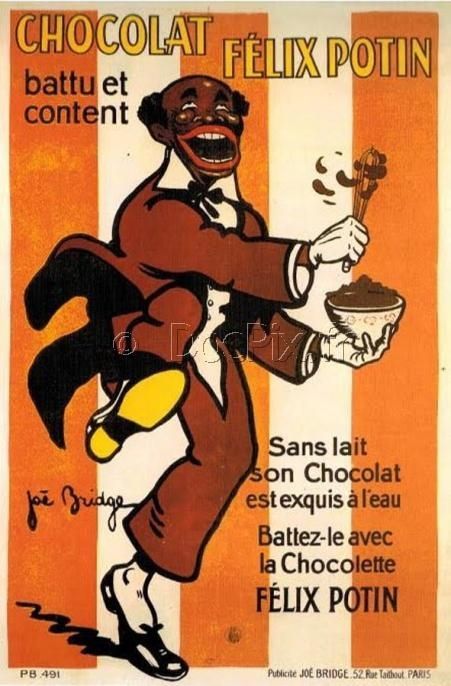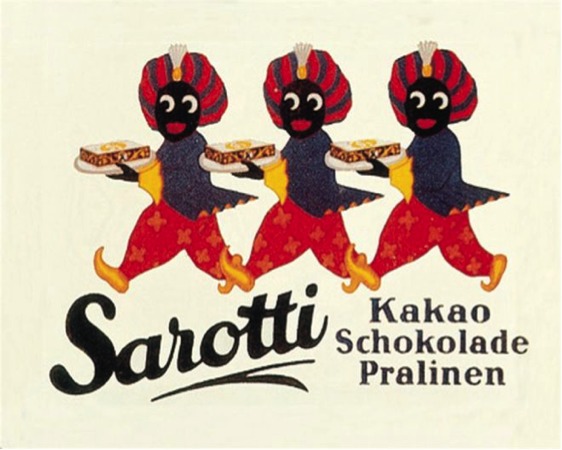Racial Advertisements

A Black server preparing chocolate in a chocolate advertisement for Felix Potin. The server can be seen whipping chocolate in preperation.

Black Mohrs serving chocolate, often depicted as Black children serving white children and adults in advertisements.
Video of 1954 Sarotti advertisement where a Sarotti Mohr can be seen feeding german women chocolates.
Colonial Roots in Chocolate Advertisements
Colonial production of chocolate forever changed how chocolate was viewed and advertised. Chocolate's adoption as a fashionable drink and status symbol in Europe allowed chocolate to become a large industry that was primarily targeted at wealthy aristocrats[9].
In the early 20th century, chocolate marketing around the world was very tied up in imperialist fantasies and in connecting brown skin with brown chocolate[8]. Many companies often have mascots or advertisements that portray black characters with common traits displaying or serving chocolate. Sarotti is a good example of this, but there are many more. Looking at a few advertisements from Sarotti we often see the Sarotti Mohr, a tray carrying blackamoor, serving chocolate happily. In a 1954 advertisement by Sarotti, a Sarotti Mohr can be seen happily giving out chocolate to white children and parents. John Rex expressed his view on imperial expansion and conquest in a 2008 article titled Racial ideas and impact of imperialism in Europe, “Racial discrimination and racial prejudice are phenomena of colonialism. Racism is the psychology of imperialism, and the spirit of empire”[9]. This advertising trend tries to depict all servers of chocolate as being this fictional black server who is happy to serve this chocolate.
8. Russo, Maria. “The Real Story Behind Roald Dahl’s ‘Black Charlie.’” The New York Times, The New York Times, 22 Sept. 2017, www.nytimes.com/2017/09/22/books/review/roald-dahl-black-charlie-chocolate-factory.html.
9. “Racial Ideas and the Impact of Imperialism in Europe.” Taylor & Francis, www.tandfonline.com/doi/abs/10.1080/10848779808579862?journalCode=cele20
